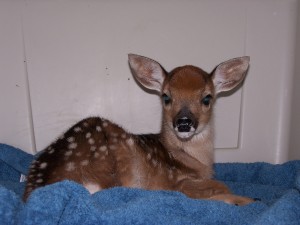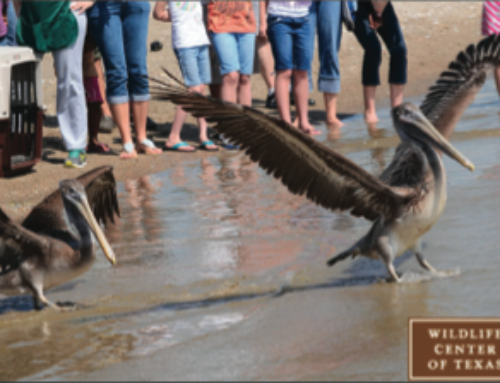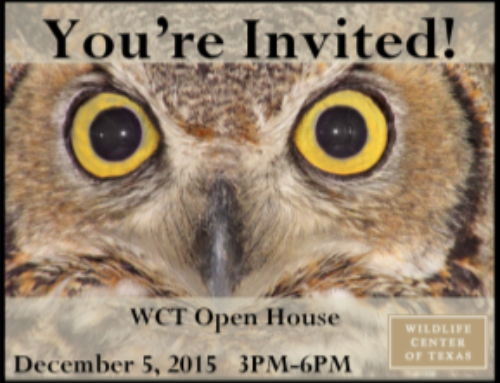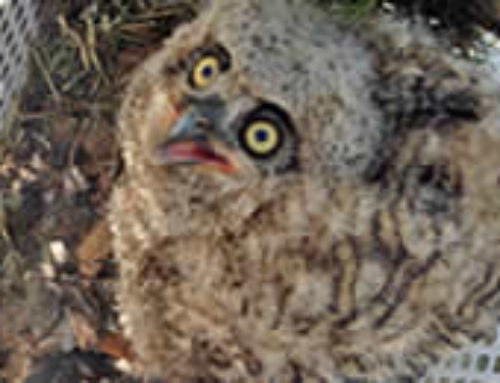The most important thing to do if you find a baby wild animal is to make sure it truly is an orphan!! Wild animals are extremely good parents and many times well meaning rescuers pick up and whisk away healthy youngsters while their parents watch. This is especially true of fawn, baby rabbit and fledgling birds.
Unless the baby is wet, cold, injured, covered with ants, fly eggs, maggots or is very weak simply observe it at a distance for a time. Nestling birds have little to no feathers and still need a parent’s body temperature to keep warm. Often the baby can be put back into the nest or into a hanging basket or bucket to protect them from dogs and cats and the parent will continue to bring food to the baby.
Don’t forget to put holes in the bottom of the container to prevent drowning should it rain. It is NOT true that the parent will abandon the baby if touched by humans – birds will not reject the nestling or fledgling even if they see it being handled by a rescuer. Be sure to monitor the baby, if Mom doesn’t return  or the baby appears to become weak, get help quickly.
or the baby appears to become weak, get help quickly.
Fledgling birds have short stubby wing and tail feathers and are beginning to look like the parents. They spend hours or days on the ground while learning to fly and are supplemented with food from their parents. This is normal especially with mockingbirds and blue jays. If the baby has wing feathers and a stubby tail, it’s supposed to be on the ground learning to fly. Place it in a tall bush or small tree and keep pets away from the area.
Look for injuries such as a broken wing or leg – symmetry is a wonderful thing, you don’t have to know bird anatomy to know that one wing is being held dramatically different than the other. Also look for the presence of fly eggs or maggots. Fly eggs look like clumps of small yellow rice grains. The whole body should be checked for fly eggs since they will be laid on any broken skin or body opening (eyes, ear, nose or cloaca).
Hypothermia (becoming too cold) is life threatening, quick action should be taken to warm the animal. Almost all wildlife, with the notable exception of the opossum, have internal temperatures that are higher than ours and because of their small body mass chill easily. The younger the animal the more important it is to keep the animal warm.
DO NOT FEED OR WATER THE ANIMAL! Great harm can come to an animal that is fed the wrong food, at the wrong time or in the wrong way.
Put the baby in a box or animal carrier that is large enough for it to stand up and move around a little bit. If a heating pad (set on low) is not available, dry uncooked rice can be placed in a sock and heated in a microwave for 30 – 45 second intervals until warm. When using an external heat source, check the animal frequently to prevent overheating. Place the animal in a quiet warm place. If the animal is being kept outdoors, it needs to be in the shade. Keeping it in a closed garage or screened in porch will prevent flies from laying eggs on it.
 Young mammals may appear lost and alone while they explore or wait for parents to return from foraging for food nearby. This is especially true for deer and rabbits who intentionally do not remain with their baby(ies) during the day. Each time the mom returns from foraging, she leaves another scent trail that could potentially lead a predator to the nest. So, as the baby gets older and can go longer between nursing, she spends more and more time nearby, but not with her offspring. In fact, prey animals often build their burrows and park their babies near human buildings because they know predators like coyote are less likely to approach.
Young mammals may appear lost and alone while they explore or wait for parents to return from foraging for food nearby. This is especially true for deer and rabbits who intentionally do not remain with their baby(ies) during the day. Each time the mom returns from foraging, she leaves another scent trail that could potentially lead a predator to the nest. So, as the baby gets older and can go longer between nursing, she spends more and more time nearby, but not with her offspring. In fact, prey animals often build their burrows and park their babies near human buildings because they know predators like coyote are less likely to approach.






Leave A Comment